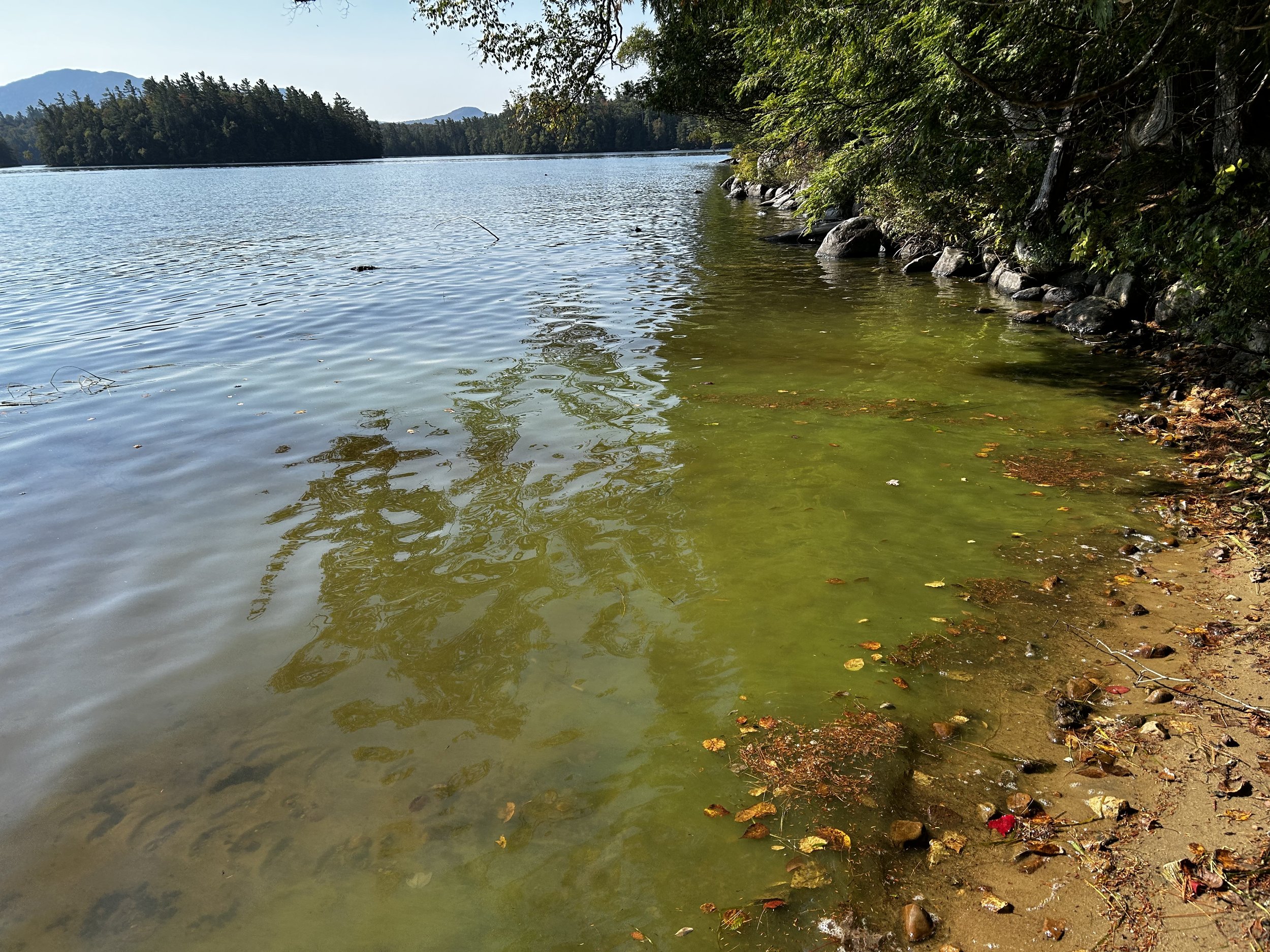
Water Column

Harmful Algal Blooms 101
Harmful Algal Blooms in the Adirondacks typically develop under sunny, warm weather conditions with low wind activity. Warm temperatures and sunlight increase growth rates, and calm conditions allow the cyanobacteria to rise and congregate at the surface without being mixed into the water column by wind and wave energy. When these factors combine with sufficient nutrient levels, they create the perfect environment for blooms to occur.

Nitrogen in Our Watersheds
In the Adirondacks, nitrogen has historically entered Adirondack lakes and ponds through acid deposition, otherwise known as acid rain. Acid rain primarily occurred when large scale industry in the midwestern United States released excessive amounts of sulfur dioxide (SO₂) and nitrogen oxides (NOₓ) as a byproduct of production.

What is Phosphorus?
Phosphorus is a naturally occurring nutrient that is essential for plant growth. It is found in soils, human and animal waste, lawn fertilizers, and living organisms, among other sources. It is important to monitor for phosphorus levels, as it can be a key indicator of the health of our waterbodies.
